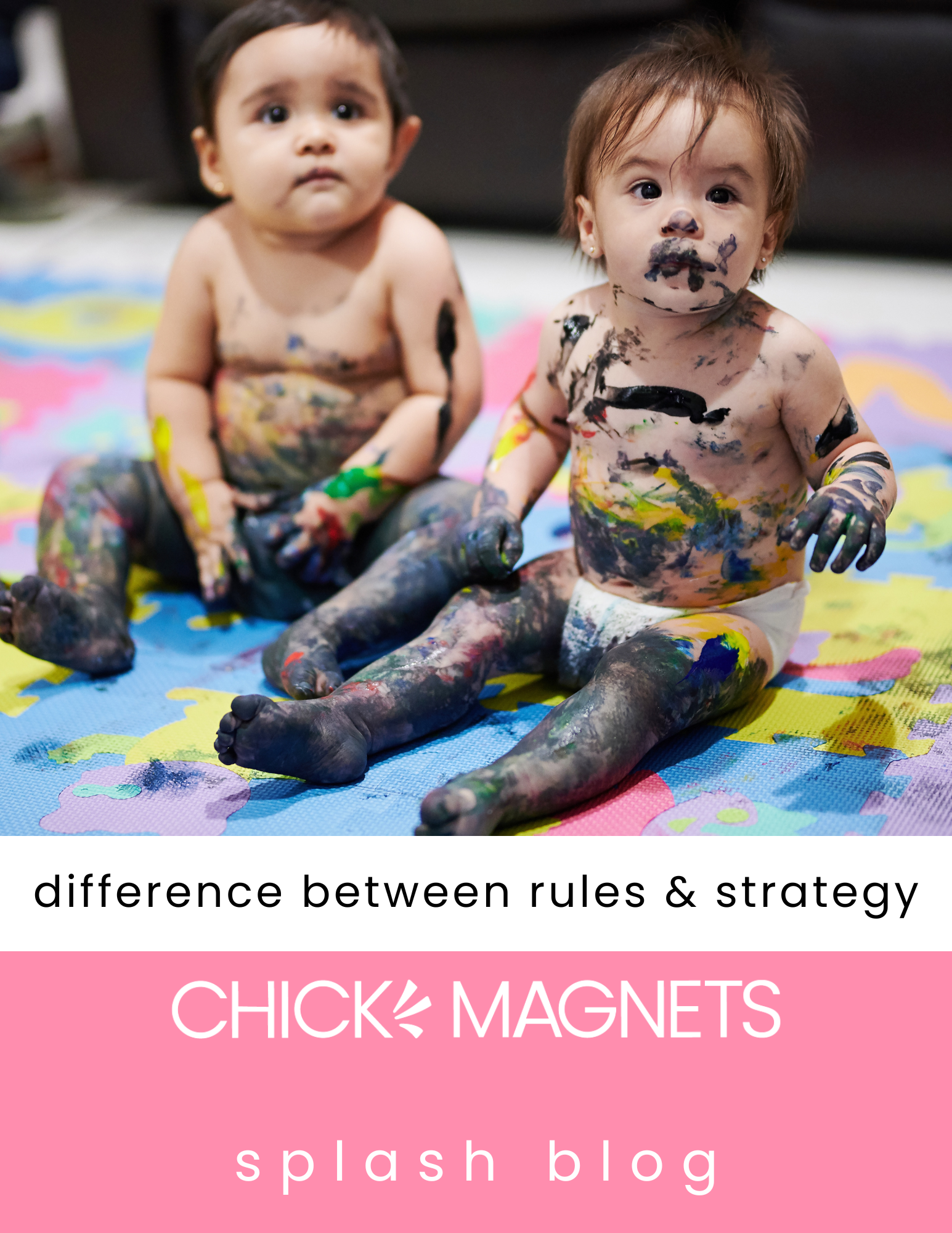Part 1
As a canasta teacher, I've shared this advice so often in lessons over the past ten years that some students have joked about having it emblazoned on a tank top! But what does it really mean, and how can you incorporate this cautionary advice into your canasta game - or even your parenting or shopping strategies? While I might not have all the answers in parenting or shopping, when it comes to canasta, I've got plenty to share!
Just Because You Can, Doesn’t Mean You Should for Canasta
Think of what you can and cannot do as the rules of the game, and what you should or should not do as strategy. The rules are set in stone; they’re either a “yes, you can” or a “no, not allowed.” But strategy is where the real depth lies. Just because the rules allow something doesn't mean it's the best course of action. Strategy is about making smart choices within the bounds of the rules, and it's something you develop and refine with experience playing the game. What may seem like a straightforward decision can actually have several valid approaches. Ask five different players what they would do in the same situation, and you'll likely get five different answers!
This article is the first in a 3-part series where we’ll explore the following six common scenarios in Canasta where strategy should guide your actions beyond just what the rules allow.
Just because you can:
1. Complete an Initial Meld (Part 1)2. Strip Your Hand After Your Partner’s Initial Meld (Part 1)
3. Pursue a Special Hand instead of an Initial Meld (Part 2)
4. Pick the Pack (Part 2)
5. Add Wilds to Melds (Part 3)
6. Open a Meld of 7s or Pure Aces (Part 3)
In-Depth Exploration Part 1
Just Because You Can…
1. Complete an Initial Meld
Example Scenario: Imagine you have in your hand the conditions for an Initial Meld. You could immediately put it down, but strategically, you might want to hold back. Why? By waiting you could set up a more advantageous position for your team.
- Mixed Aces: I rarely hold back an Initial Meld with mixed aces. I consider this move riskless and by putting at least two aces on the table, I eliminate (i) the possibility of my opponents getting a Pure Aces Canasta, and (ii) the need to hold aces defensively. If my partner is holding aces, she has a place to meld them. If not, we will not be penalized for an incomplete mixed aces meld.
- Card Count: There is significant downside to using most of your hand for an Initial Meld. With very few cards, it's challenging to be strategic and enjoy the game. You may be forced to throw a card you wished to hold back defensively (like a 7, ace or card that gives your opponent the pack) or a card that you could have used on your own melds. Don’t do this intentionally unless you must!
- Opponent’s Position: I will rarely hold an Initial Meld if my opponents have already made theirs. If they're in a position to meld and pick the pack, then I'll want to ensure my partner can as well.
- Threes Distribution: If your team holds the majority, you may wish to open quickly in order to close at least one and preferably two canastas, securing points for your threes.
- Pack Potential: Provided my opponents have not completed an Initial Meld and my Initial Meld does not contain mixed aces, I will usually hold the Opening and wait for the pack (“Open and Pick the Pack”). If that opportunity isn’t presenting itself, I must weigh (i) continuing to hold the Open to try to get the pack, against (ii) opening and letting my partner potentially get it. Often, this is not such an easy call. Do you have any guiding strategy for when you'll hold an Open versus immediately putting it down? Share your experience below.
- End of Hand Indicators: You must adjust strategy when signs indicate that the hand might end soon. This includes when a round reaches the Turning Card, or when a team has closed at least two canastas and reports three or fewer cards in hand. I often refer to the Turning Card as the point at which you “Throw Spaghetti Against the Wall.” It’s very hard to be strategic when play stops! (I fully appreciate that a round ending due to a Special Hand is usually unexpected. So, trying to close at least one canasta as quickly as possible while the opponent isn't opened is crucial.)
2. Strip Your Hand After Your Partner’s Initial Meld
Consider this scenario: Team A completes an Initial Meld of 180, leaving the player with two cards. She discards, picks up her bonus (talon) of three cards, and has four cards left. Her partner then melds nine of her 14 cards, discards, and has four cards left too. The rules allow the partner to meld all those cards, but strategically, was that a good move? It depends...
- Closing Canastas: If your hand complements your partner’s melds, closing two canastas without the discard pile should be relatively easy. However, if your hands are not simpatico your team may need the discard pile to complete any canastas and start earning points. This should influence your strategy around what to hold back and what to meld.
- Pack Pickup Strategy: Holding onto pairs increases your chances of picking up the discard pile. Beginners will often assume that a player will automatically add to any melds her team has open. More advanced players are not so predictable.
- End of Hand Indicators: It bears repeating that your strategy must change if there are indications of the round ending soon. If you think the hand is wrapping up quickly, meld what you can (what the rules allow) and hope for the best!
Conclusion: A Strategic Approach
Next time you sit down for a game of Canasta, practice strategy over rules by focusing on the why behind each move. Just because you can doesn't mean it's the best choice strategically.
- mixed aces and card count: be cautious with your Initial Meld; consider the benefits of melding mixed aces and avoid depleting your hand unless necessary.
- opponent's position, threes distribution and pack potential: always assess your opponent's moves, threes distribution and the state of the pack before committing to a strategy; holding back might give you or your partner a better opportunity to pick the pack or, in a dangerous threes situation, you may aim for an in & out speed game.
- end-of-hand indicators: adjust your strategy when it seems like the hand is nearing its end; meld cards and prioritize closing canastas to maximize points.
Have you ever hesitated to do something just because you could? Share your experiences and strategies in the comments below - we'd love to hear how you navigate these tricky situations.
Stay tuned for Parts 2 and 3 of this series, where we'll dive deeper into other advanced scenarios. Don't miss out - subscribe to get notified when new posts go live, and follow us on Instagram and Facebook for more Canasta tips and tricks. Don't know how to play Canasta but would love to learn?


